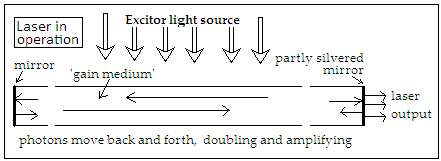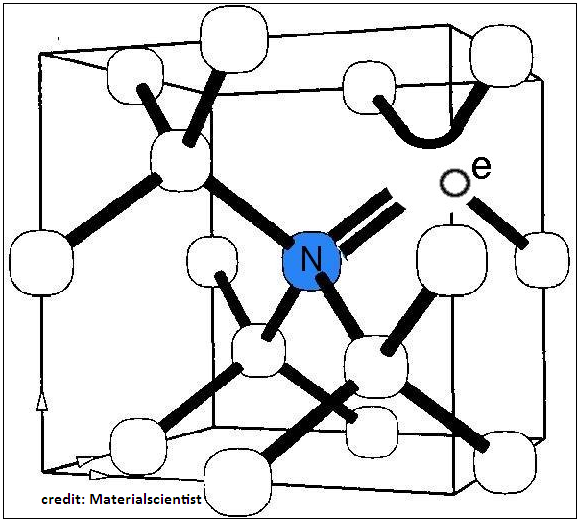The diamond crystal has become home to a microwave laser that works at room temperature, says S.Ananthanarayanan.
The first Laser was in the microwave region, and was called the maser. Lasers, which are the same thing in the optical region, were developed soon after, but they outpaced the maser in applications and specialization. An important reason is that masers need low pressure gas or work at low temperature, conditions restricted special laboratories, while lasers are used everywhere.
But the microwave region is important and the want was felt of masers for general use. In 2012, Jonathan D. Breeze and Neil McN Alford of Imperial College, London collaborated with Mark Oxborrow, from the UK National Physical Laboratory in Teddington, in creating a first room temperature maser that worked in pulses. Breeze and Alford, with Enrico Salvadori, Juna Sathian, and Christopher W. M. Kay, from University College, London, London Centre for Nanotechnology, Queen Mary University of London and University of Saarland, Germany now report, in the Journal, Nature, a more versatile, continuous wave, room temperature maser, where the operative part is held steady in a diamond lattice.
The laser, or the maser, is a device that generates high frequency electromagnetic waves as a stream of waves, or a collection of waves ‘in step’, in place of a haphazard surge of waves. Waves like this at radio frequencies are easily created by electronic devices, but they cannot work at the dimensions of very short waves. Here, we need to harness emission from the interior of the atom. Any warm object does emit electromagnetic waves, in the infra red or the visible part, but these waves are emissions from physical vibrations of atoms. They are hence of different frequencies and not in step. Even where the e.m. radiation is from changes in the energy levels of atoms, as in the fluorescent light, the radiation is reasonably of the same colour, but the waves are not in step or directional.
In the laser an excited atom is stimulated to emit light by another particle of the same frequency. The two particles of light are hence of the same frequency and, as they set out together, they are in step. The arrangement to create these conditions calls for accurate back and forth reflection of light waves, which makes for a highly directional beam. The laser has hence found use in research, in communications and in generating powerful beams to melt things.
The trick in creating lasers is a condition when there are excited atoms waiting to be stimulated into emission. As excited states are unstable and decay, atoms are mostly in the ground state and excited atoms, which can be stimulated to emit, are rare. In materials suitable for lasers, however, there is an excited state that stays put for a short while before spontaneously de-exciting. It is hence possible to create a condition of more atoms in the excited state than in the normal, or a ‘population inversion’.
Now, if the material is placed between a pair of parallel mirrors, particles of light emitted spontaneously would reflect back and forth are likely to meet excited atoms, when they would ‘stimulate’ another particle of light, which would be ‘in step’, to be emitted. The pair could then stimulate other atoms and a back and forth surge of light particles of the same frequency, in step and in the same direction.

Light in the visible part of the spectrum is emitted by electronic transitions in atoms. These are when the electrons that orbit atoms move to higher orbits, when excited, and emit light corresponding to the difference in energy, when they de-excite. Microwaves, however, are very low energy waves which arise ether from low energy molecular transitions or from atomic transitions between energy levels that are very close to each other. Such close packed energy states in atoms arise not from the orbit of electrons, but when the electron spin flips from one direction to another. When the atom is in a magnetic field, the electron spin can be either in the same direction or in the opposite direction. With a pair of electrons, thus, the spin can be ½ + ½ = 1 or ½ - ½ = 0 or (-½) + (- ½) = -1 (as the unit of spin of the electron is '½'). Any one flip of an electron would thus cause a change in the state by ‘1’, corresponding to the energy of microwaves.
The practical difficulty in making use of such electron spin states is that excited states are sensitive to disturbances, like collisions of atoms in a gas or vibrations of atoms in solids. The first maser, which used ammonia gas, thus used the gas at very low pressure, a near vacuum, and solids that have been used for masers need to be kept at very low temperatures, nearly absolute zero, where there are very little thermal vibrations. Masers for everyday use have thus not been possible.
The first room-temperature maser was in 2012, with an organic material called pentacene. The molecules of pentacene could configure in a way that allowed maser action. A crystal with pentacene was ‘pumped’ by a yellow light, optical laser, which brought about ‘population inversion’ and a shot of microwaves set off a cascade of stimulated emission.
The shortcoming, however, was that the organic material could not withstand continued ‘pumping’ and the maser could emit a flash of coherent microwaves only for every short spell of exposure to the laser. This was a form of ‘pulsed’ working, rather than producing a continuous maser beam, which is needed for many applications.
The success now reported is of a maser that is both at room temperature and operates continuously. The maser medium was a diamond lattice with nitrogen atoms in place of some of the carbon atoms. The carbon atom has four electrons in its outer shell and in the lattice each of these pairs with one of the neighbouring atom, create a stable lattice. The nitrogen atom, in contrast, has three outer shell electrons. If a nitrogen atom takes the place of carbon in the lattice and there is a vacant lattice position, the Nitrogen – vacancy lattice defect, as it is called, gives rise to two unpaired electrons. These then have three possible spin states – 1, 0 or 1.
Now, a magnetic field was applied, so that vacancy centres with spin 0 had more energy than centre with spin -1. And the, a laser pump created an excess of vacancy centres with spin 0, than spin -1. The diamond lattice protects the states from being corrupted, without the need for low temperatures. The excited spin states, when stimulated by a microwave particle, then decayed from spin 0 to spin -1, emitting more microwave particles, and then continuous maser action.

The maser has an important application as an amplifier of very weak microwave signals. In normal methods of amplification, there are disturbances that create ‘noise’ and distort the signal. The maser, however, would amplify with no noise and this has application in a range of instrumentation, for astronomy and medical applications.
The maser beam would also be a great medium for communication with distant spacecraft. The optical laser is high frequency and the beam gets scattered. A microwave beam would scatter to a much lesser extent.
------------------------------------------------------------------------------------------ Do respond to : response@simplescience.in